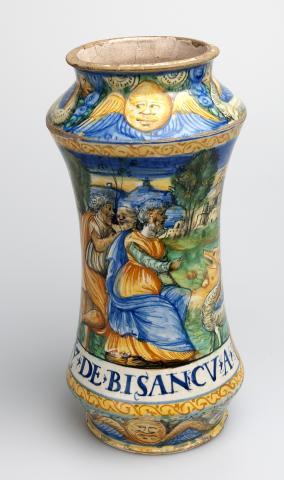Recommendation
In a letter dated 18 April 2007, the Minister for Education, Culture and Science (hereafter referred to as: ‘the Minister’) requested the Restitutions Committee (hereafter referred to as: ‘the Committee’) to issue a recommendation regarding the application for the restitution of ten works of art from the Netherlands Art Property Collection in the custody of the Dutch government (hereafter referred to as: ‘the NK collection’) The application concerns objects that are said to have been the property of Fritz Gutmann (1886-1944) and that were returned to the Netherlands from Germany after the Second World War. This recommendation is limited to six of the ten objects, namely:
- NK 605: Unknown, Italian maiolica Albarello with polychromed decor of four figures and a dragon and inscription: ‘Sy – De – Bisancu – A –‘
- NK 1960: J. de Wit, Venus, Bacchus and Ceres with Sleeping Amor;
- NK 3147 a-b: Königliche Sächsische Porzellan-Manufaktur, Meissen plate with wavy-edged rim and a shell-shaped dish, with polychromed decor of flowers;
- NK 3214: Unknown, Woollen Ghiordes rug with Mihrab motif;
- NK 3216: Unknown, Prayer mat with Mihrab motif;
- NK 3217: Unknown, Rug with black velvet fond and stylised flowers and birds in white cotton and silver thread.
These works are currently housed in the depot of the Netherlands Institute for Cultural Heritage or on loan to a museum in the Netherlands.
